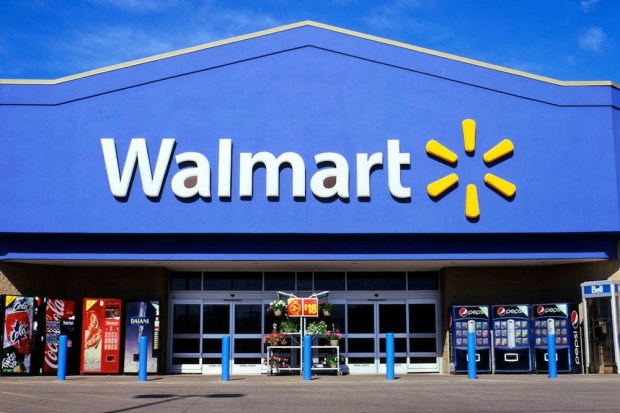Walmart’s eCommerce Woes (And Why They’re One To Watch)

There was no joy in retail Mudville. Macy’s struck out. Nordstrom struck out. Gap struck out. Target struck out. J. Crew struck out. Dick’s struck out. Hudson Bay struck out.
Sure, there were some hits. TJX continued to be the David Ortiz of retail and continued knocking the stuffing out of the ball. H&M managed a solid triple – and is now moving from Triple AAA to the big leagues and anchoring malls.
Amazon hit another series of home runs and then did some Golden Glove work at short stop, which made sure lots of other players never got on base. But Amazon is the A-Rod of retail baseball — usually does well, often accused of cheating and makes almost no one happy when it succeeds (other than New York Yankees fans, which for the purposes of this metaphor are Amazon Prime customers).
But for the handful of hits, there were many, many more misses and an ever increasing drum beat that physical retail is circling the drain.
Then it was Walmart’s turn up to bat.
And much to the surprise of everyone – Casey, mighty Casey, did not strike out.
Walmart reported net income of 98 cents per share, well above the 88 cents Wall Street was expecting. Total revenue for the period came to $115.9 billion, again well above the analyst forecasts for $112.67 billion. Walmart’s first quarter results represented a seventh straight quarter of U.S. comparable sales growth, which sent battered shares up 10 percent in pre-market trading.
Then news drew some excitement.
“It’s exciting to see the improvement in core retail fundamentals,” Walmart Stores CEO Doug McMillon said on a prerecorded call. The better inventory management, along with the higher wages and training are giving “our associates more time on the sales floor to serve customers.”
“Investment in wages, training and store improvements are beginning to pay off,” said Walmart U.S. CEO Greg Foran on a call with media.
Wall Street was pretty excited too — and shares spiked up almost 10 percent as Walmart seems to have shrugged off the pall that has been hanging over retail earnings of late.
And the news is genuinely good – but with perhaps two rather important asterisks that are going under-reported in the wave of good feeling sweeping the land.
Watch Those Same-Store Sales
Comparable sales — sales minus the impact of newly closed or opened stores — were up 1 percent in Q1. That beats estimates – which on the whole were only looking for a gain of .5 percent, but it is still not a massive uptick. Granted, when every other retailer is reporting losses in same-store sales — slight growth (particularly in an operation as large as Walmart’s) looks excellent — but in a less struggling retail environment the achievement might look a good deal less like a home run, and more like a single.
There was, however, some strong growth in the Walmart’s Neighborhood Market brand which saw a sales lift of 7.1 percent. Walmart also saw foot traffic on the rise – again carrying forward a multi-quarter trend.
Less positive — even from Walmart’s executive team’s point of views — was the growth over in eCommerce, which notched in at 7 percent.
eCommerce Is “Too Slow”
While no growth is “bad” growth, of course, even Walmart’s CEO conceded that given Walmart’s commitment and investment in the digital retail future, the growth in that area is just not where it needs to be.
“Globally, on a constant currency basis, eCommerce sales and GMV grew 7 percent and 7.5 percent, respectively. Growth here is too slow,” McMillon noted on the post-earnings call with investors. “We can see progress against several of the necessary capabilities we need to win in eCommerce but we’re still working on a few others.”
McMillon then noted that in total the firm is pushing to see the fruits out of all those investment in digital commerce, as well as calling out some specific areas that will be particularly challenging.
“We need them all to come together to see stronger growth. For example, our marketplace is ramping up but it takes time to build the assortment to the point where customers realize the depth of assortment. We now offer more than 10 million SKUs on Walmart.com and we are growing that number through a combination of first-party and third-party items. It makes sense that perception will trail reality and we’ll work on both during the course of this year.”
Walmart says the good news is that development in the U.S. is outpacing international efforts – the bad news is that this strength corresponds with relative weakness in Brazil, China and the U.K., three mobile and digital friendly marketplaces full of middle class consumers who aren’t shopping with Walmart online.
And so far — by the numbers, it isn’t what is paying dividends, or the reason the shareholders are passing around the party hats this week.
But then, Walmart does manage an extremely large and complex supply chain – and it didn’t get to being the largest retailer on earth by sales volume by not being good at both adopting to customer preferences or managing large and complex logistical networks.
The question is can it catch up, and find a way to leverage all that physical presence to create a powerful dual front retail operation?
Unfortunately, the game is just getting underway, and it is too early to tell. Tune in for later innings though — the game only gets more competitive from here.